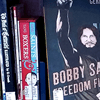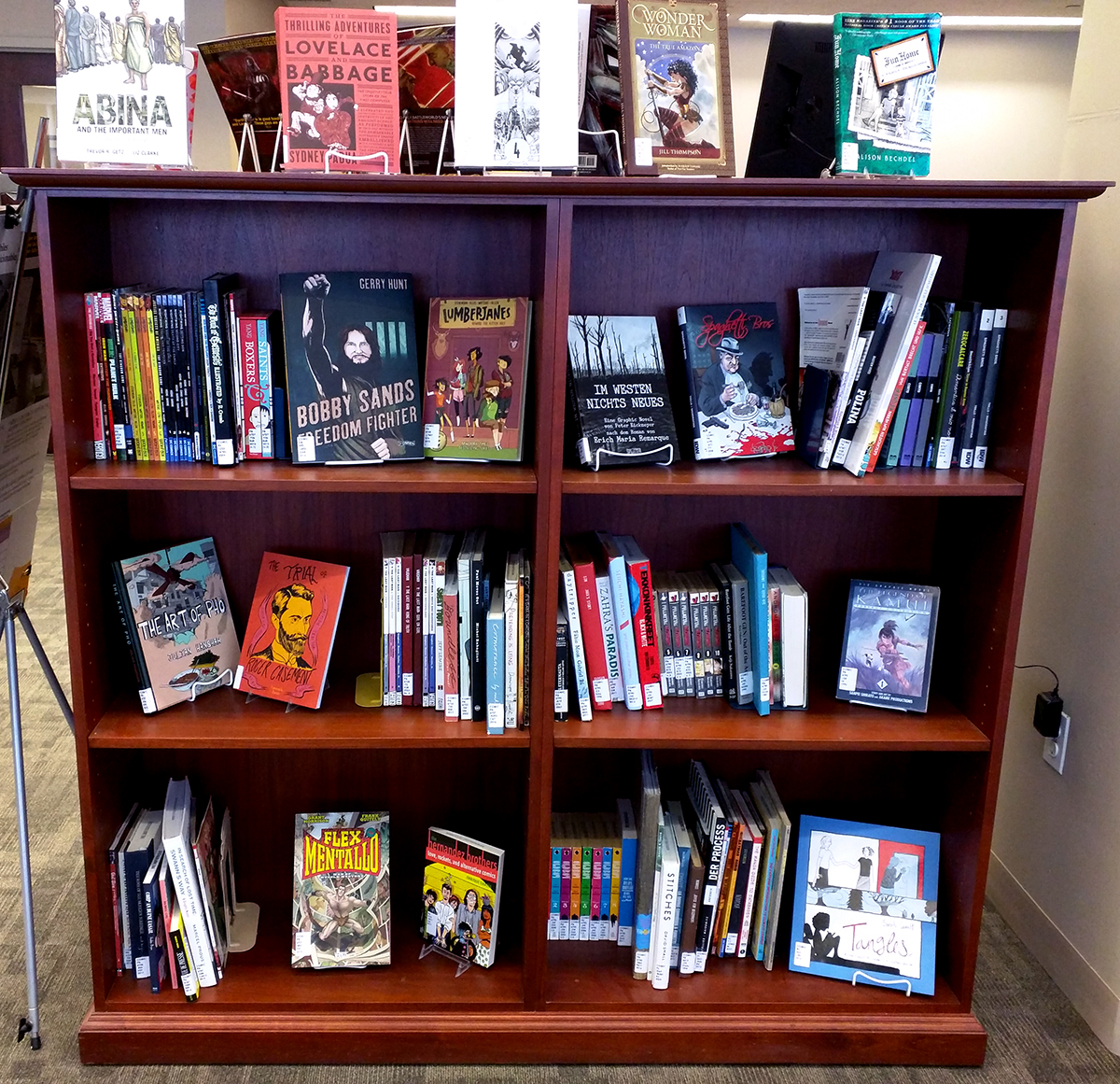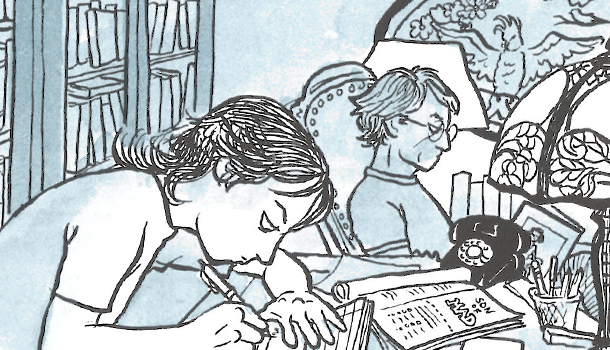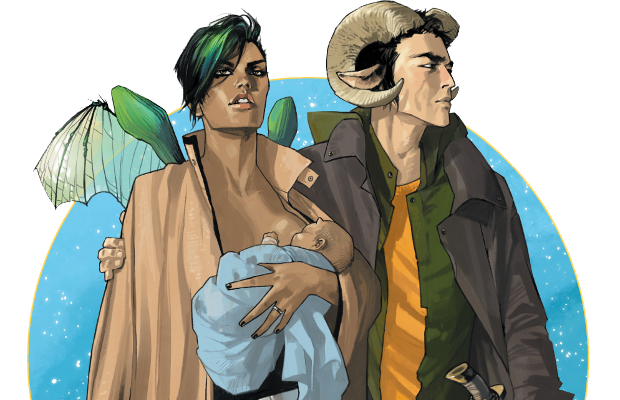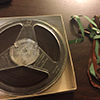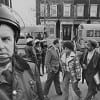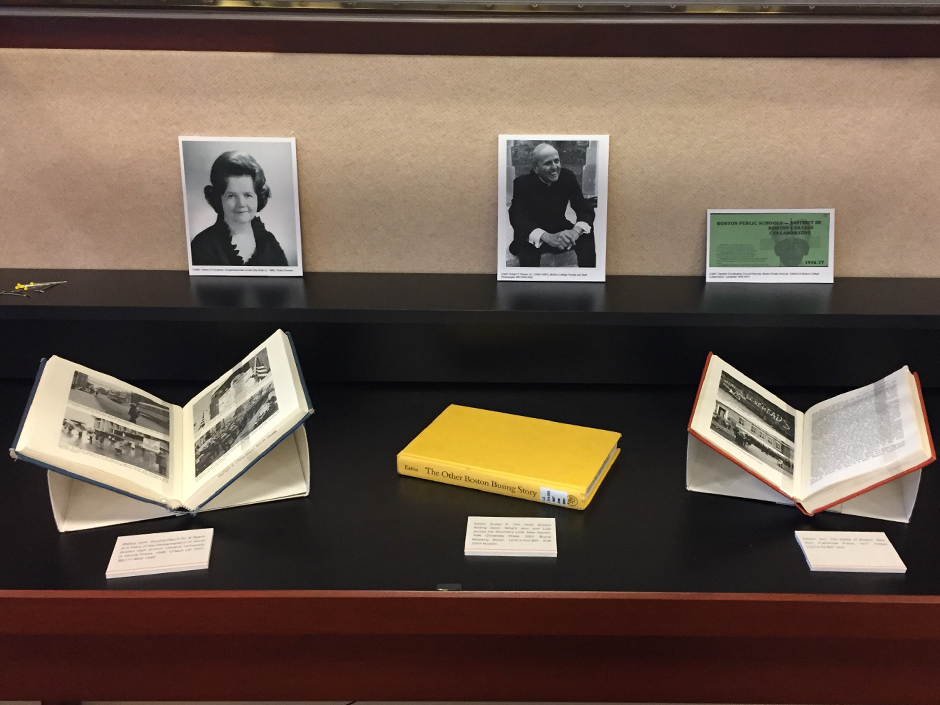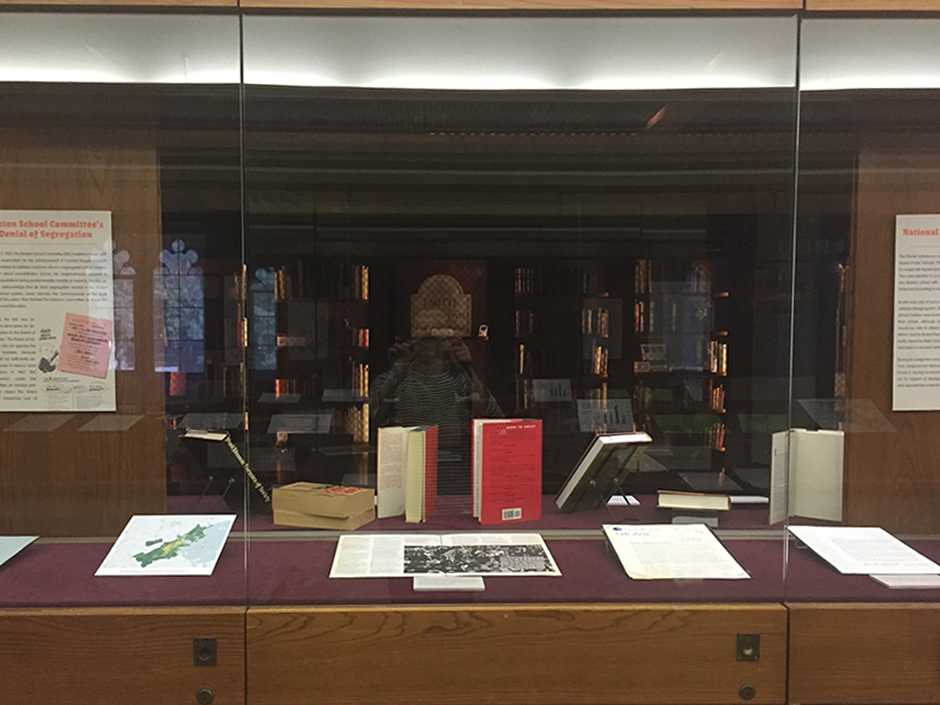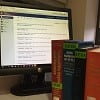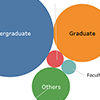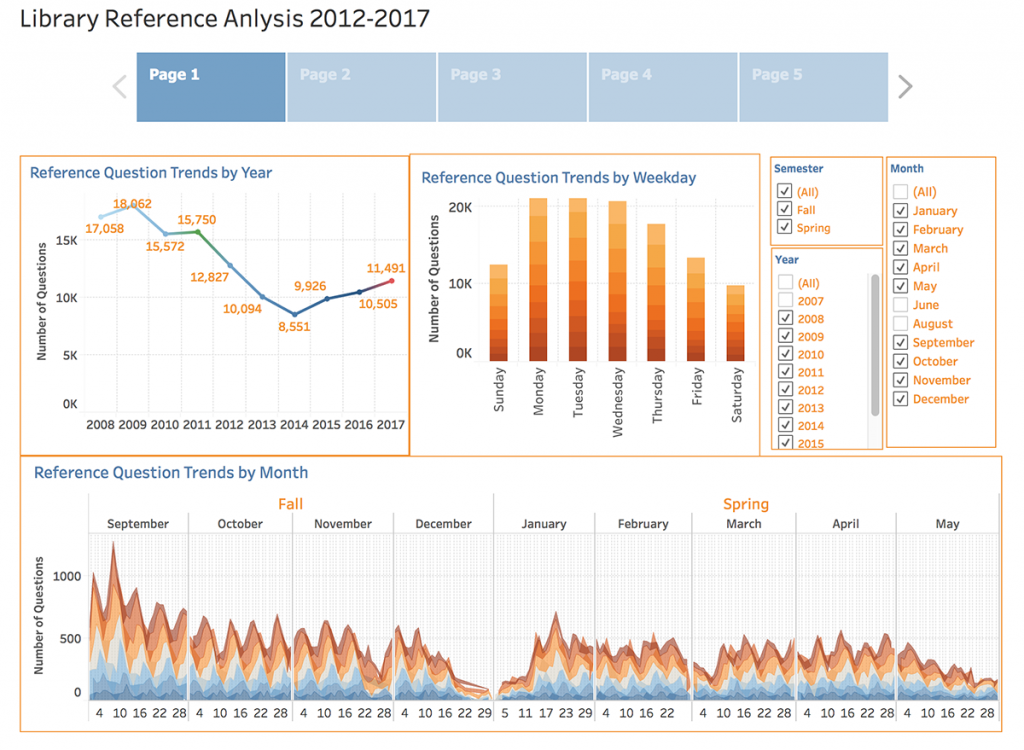John J. Burns Library continues to highlight its unique collections through a regular series of exhibits installed in our main corridor. A glimpse at this year’s exhibits suggests the breadth of content available for research, teaching, and enjoyment. We invite students, faculty, and the general public to view our exhibits during our regular open hours. We also welcome exhibit proposals and other exhibit-centered collaborations that strongly align with Burns Library content.
 From February through June, Burns Library presented The Object in the Archives: Networks and Materiality at Burns Library, an exhibit curated by Rachel A. Ernst, Ph.D. ’18, and longtime Burns Library Reading Room assistant. In her dissertation, “Mattering: Agentic Objects in Victorian Literature,” Dr. Ernst examined objects that have agency within the 19th-century novel and the ways in which those objects reshape their storyworlds. Shifting her lens to the holdings at Burns Library, she chose representative objects from 30 different collections and grouped her selections into four categories: personal, professional, sacred, and leisure. She then asked the visitor to consider how objects move from personal possession to archival artifact, and the relationships and connections that develop between and across objects, collections, and researchers. For a more in-depth look into her curatorial process, see the entry she contributed to our Burns Library Blog.
From February through June, Burns Library presented The Object in the Archives: Networks and Materiality at Burns Library, an exhibit curated by Rachel A. Ernst, Ph.D. ’18, and longtime Burns Library Reading Room assistant. In her dissertation, “Mattering: Agentic Objects in Victorian Literature,” Dr. Ernst examined objects that have agency within the 19th-century novel and the ways in which those objects reshape their storyworlds. Shifting her lens to the holdings at Burns Library, she chose representative objects from 30 different collections and grouped her selections into four categories: personal, professional, sacred, and leisure. She then asked the visitor to consider how objects move from personal possession to archival artifact, and the relationships and connections that develop between and across objects, collections, and researchers. For a more in-depth look into her curatorial process, see the entry she contributed to our Burns Library Blog.
 Our Summer 2018 exhibit is Dreams of Art & Glory: Book Craft by the Roycrofters. Elbert Hubbard founded Roycroft Press as a private press in East Aurora, New York in 1894 when he was unable to find a publisher for his work Little Journeys to the Homes of the Great. The Roycrofters — a community of craftspeople and artists attracted to Hubbard’s philosophies — flourished within the widespread Arts and Crafts movement for several decades, before declining after Hubbard’s death in 1915. The exhibition features volumes from the Boston College Libraries that highlight Roycrofter printing and bookbinding designs, including the modest Little Journeys pamphlet series, beautifully printed and hand decorated texts, and stunning modelled leather bindings. Works from other artists and presses are also displayed, highlighting the worldwide influence of the Arts and Crafts movement.
Our Summer 2018 exhibit is Dreams of Art & Glory: Book Craft by the Roycrofters. Elbert Hubbard founded Roycroft Press as a private press in East Aurora, New York in 1894 when he was unable to find a publisher for his work Little Journeys to the Homes of the Great. The Roycrofters — a community of craftspeople and artists attracted to Hubbard’s philosophies — flourished within the widespread Arts and Crafts movement for several decades, before declining after Hubbard’s death in 1915. The exhibition features volumes from the Boston College Libraries that highlight Roycrofter printing and bookbinding designs, including the modest Little Journeys pamphlet series, beautifully printed and hand decorated texts, and stunning modelled leather bindings. Works from other artists and presses are also displayed, highlighting the worldwide influence of the Arts and Crafts movement.
 Also on display this summer, on the Bapst Library landing outside Gargan Hall, is Viewpoints: Reactions from the Boston College Community, a look at how students have responded to the current events of their days. Diaries, letters, photographs, and poetry from the Boston College Archives allow us to cultivate a connection through time by way of BC students who were serving in the military, confronting racial strife, or grappling with difficult choices.
Also on display this summer, on the Bapst Library landing outside Gargan Hall, is Viewpoints: Reactions from the Boston College Community, a look at how students have responded to the current events of their days. Diaries, letters, photographs, and poetry from the Boston College Archives allow us to cultivate a connection through time by way of BC students who were serving in the military, confronting racial strife, or grappling with difficult choices.
 For the Fall/Winter exhibit, Burns Library Archives staff are in the midst of surveying hundreds of linear feet of typescript and manuscript documents to uncover doodles, drawings, sketches, sculptures, and other artwork to demonstrate that there’s so much more to archives than just words.
For the Fall/Winter exhibit, Burns Library Archives staff are in the midst of surveying hundreds of linear feet of typescript and manuscript documents to uncover doodles, drawings, sketches, sculptures, and other artwork to demonstrate that there’s so much more to archives than just words.
Stay tuned to John J. Burns Library social media feeds and blog for more information on installation dates and highlights. We hope you’ll visit soon to experience the unique content our collections have to offer.


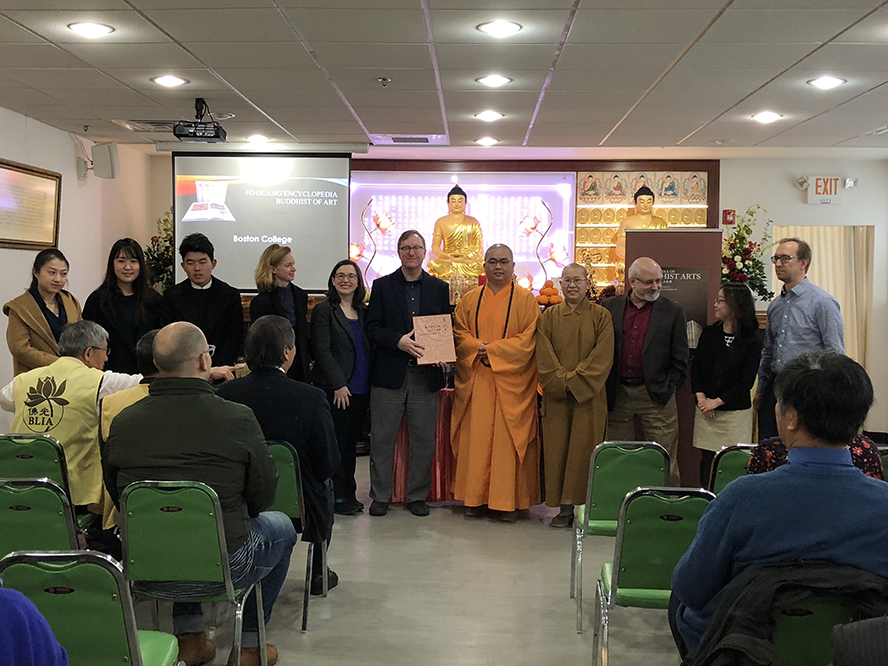 In January 2018, Fo Guang Shan Buddhist Temple in Cambridge donated a 22 volume English Language Encyclopedia of Buddhist Art to the Boston College Libraries. The Fo Guang Shan Temple congregation has 250 temples around the world and this encyclopedia represents the collective 12-years long effort of many monks and scholars. The encyclopedia has nearly 10, 000 entries, over 14, 000 pictures, and appears to be the first comprehensive reference collection of Buddhist art in the world. This gift was enthusiastically welcomed by Fine Arts, Theology, and Asian Studies faculty as a valuable and much needed addition to the Boston College Libraries’ collection on Buddhism. Chris Strauber, Julie Hughes, and Fine Arts faculty Aurelia Campbell accepted the gift on January 28th at the Fo Guang Shan Temple.
In January 2018, Fo Guang Shan Buddhist Temple in Cambridge donated a 22 volume English Language Encyclopedia of Buddhist Art to the Boston College Libraries. The Fo Guang Shan Temple congregation has 250 temples around the world and this encyclopedia represents the collective 12-years long effort of many monks and scholars. The encyclopedia has nearly 10, 000 entries, over 14, 000 pictures, and appears to be the first comprehensive reference collection of Buddhist art in the world. This gift was enthusiastically welcomed by Fine Arts, Theology, and Asian Studies faculty as a valuable and much needed addition to the Boston College Libraries’ collection on Buddhism. Chris Strauber, Julie Hughes, and Fine Arts faculty Aurelia Campbell accepted the gift on January 28th at the Fo Guang Shan Temple.
